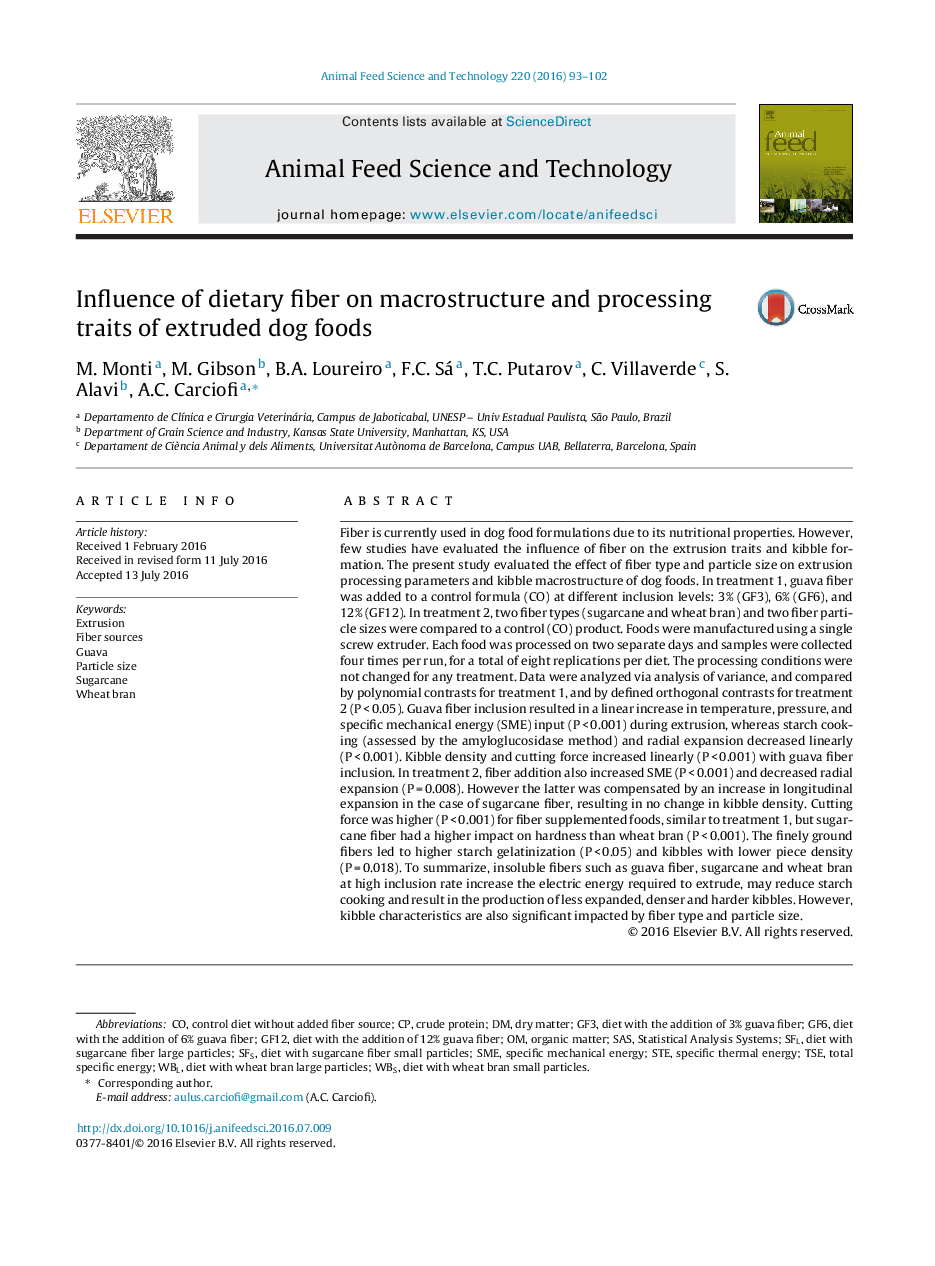| Article ID | Journal | Published Year | Pages | File Type |
|---|---|---|---|---|
| 2419245 | Animal Feed Science and Technology | 2016 | 10 Pages |
•Guava fiber, sugarcane fiber and wheat bran increased dough resistance to flow, elevating specific mechanical energy implementation.•Guava fiber, sugarcane fiber and wheat bran interfered with extrudate macrostructure, creating denser and harder kibbles.•Fibers may reduce starch cooking.•The utilization of fibers with small particle sizes promoted higher kibble expansion and starch gelatinization.
Fiber is currently used in dog food formulations due to its nutritional properties. However, few studies have evaluated the influence of fiber on the extrusion traits and kibble formation. The present study evaluated the effect of fiber type and particle size on extrusion processing parameters and kibble macrostructure of dog foods. In treatment 1, guava fiber was added to a control formula (CO) at different inclusion levels: 3% (GF3), 6% (GF6), and 12% (GF12). In treatment 2, two fiber types (sugarcane and wheat bran) and two fiber particle sizes were compared to a control (CO) product. Foods were manufactured using a single screw extruder. Each food was processed on two separate days and samples were collected four times per run, for a total of eight replications per diet. The processing conditions were not changed for any treatment. Data were analyzed via analysis of variance, and compared by polynomial contrasts for treatment 1, and by defined orthogonal contrasts for treatment 2 (P < 0.05). Guava fiber inclusion resulted in a linear increase in temperature, pressure, and specific mechanical energy (SME) input (P < 0.001) during extrusion, whereas starch cooking (assessed by the amyloglucosidase method) and radial expansion decreased linearly (P < 0.001). Kibble density and cutting force increased linearly (P < 0.001) with guava fiber inclusion. In treatment 2, fiber addition also increased SME (P < 0.001) and decreased radial expansion (P = 0.008). However the latter was compensated by an increase in longitudinal expansion in the case of sugarcane fiber, resulting in no change in kibble density. Cutting force was higher (P < 0.001) for fiber supplemented foods, similar to treatment 1, but sugarcane fiber had a higher impact on hardness than wheat bran (P < 0.001). The finely ground fibers led to higher starch gelatinization (P < 0.05) and kibbles with lower piece density (P = 0.018). To summarize, insoluble fibers such as guava fiber, sugarcane and wheat bran at high inclusion rate increase the electric energy required to extrude, may reduce starch cooking and result in the production of less expanded, denser and harder kibbles. However, kibble characteristics are also significant impacted by fiber type and particle size.
